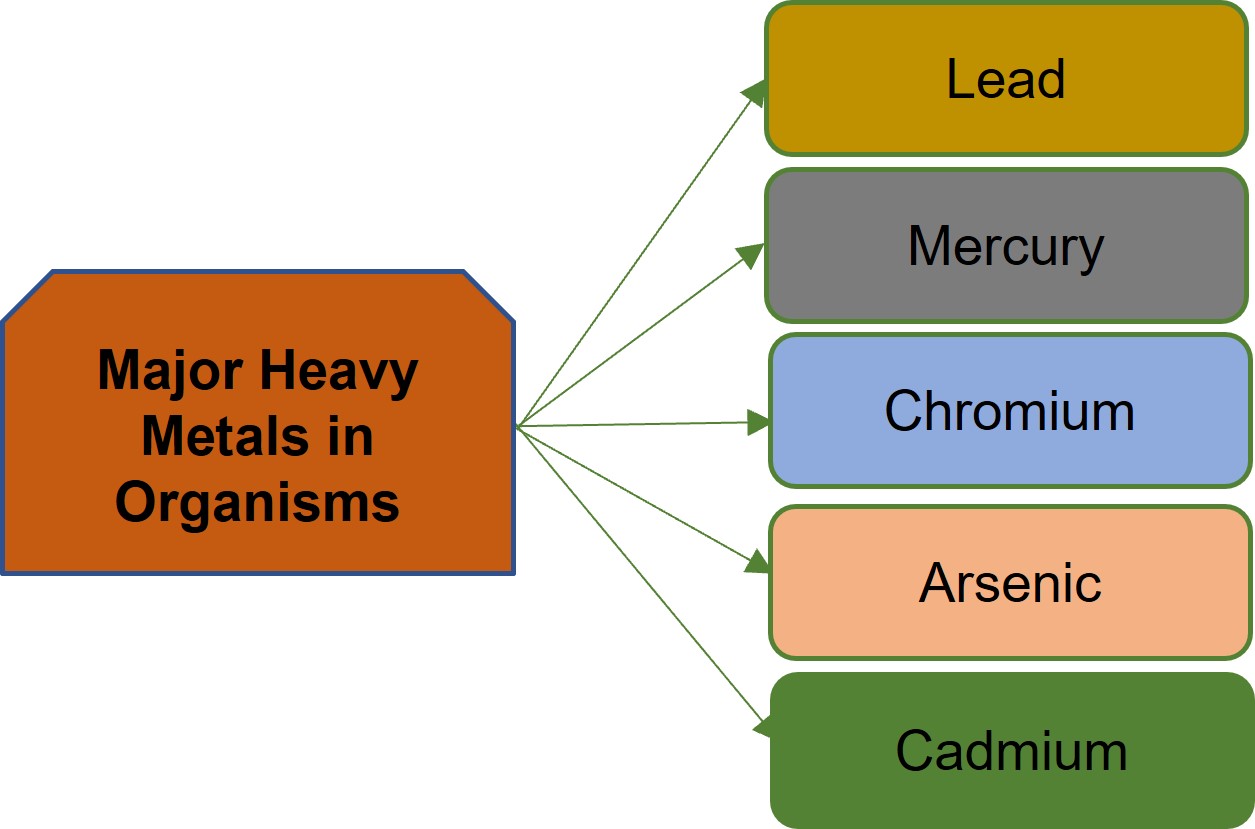Heavy metals are metals with density greater than 4.5 g/cm3, including gold, silver, copper, iron, mercury, lead, cadmium, etc. Heavy metals are very difficult to be biodegraded, but instead they can be enriched thousands of times by the biomagnification of the food chain and finally enter the insects. Heavy metals can interact strongly with proteins and enzymes in insects, rendering them inactive, and the carriers on the surface of the cell membrane will not be able to transport nutrients and discharge metabolic wastes, so the cells in the body cannot Nutrients are obtained, wastes are eliminated, energy cannot be produced, cellular structures collapse and function is lost, causing chronic toxicity.
 Fig 1. Major heavy metals in organisms.
Fig 1. Major heavy metals in organisms.
Some heavy metals in living organisms can in turn be converted by microorganisms into more toxic organic compounds (e.g. inorganic mercury can be converted into organic mercury). The excessive content of heavy metals affects the physiological status of insects and thus the quality of insects. Lifeasible provides heavy metal testing services to monitor insects for excessive heavy metals in their bodies. Based on the huge impact of heavy metals on insects, we can provide testing services like lead, cadmium, mercury/ total mercury and arsenic/ total arsenic in insects.
| Service Content | Methods |
| Lead | Inductively coupled plasma atomic emission spectroscopy (ICP-AES) Lifeasible offers ICP-AES to detect the content of heavy metals in insect samples like live insects, insect carcasses and insect powder. We use the inductively coupled plasma to produce excited atoms and ions that emit electromagnetic radiation at wavelengths characteristic of a particular element. We provide conventional mineral ions and heavy metal ions, and draws standard curves by standards to achieve absolute qualitative quantification of target heavy metals in insect samples with some benefits such as all metal elements and some non-metal elements can be measured and multiple elements can be measured simultaneously. |
| Cadmium | |
| Mercury/ total mercury | |
| Arsenic/ total arsenic |
Insect metal content detection can be used for live insects, insect carcasses and insect powder. The number of samples is not less than 6 and each sample weights less than 0.4 mg.
Lifeasible offers insect heavy metal content detection for your insects. We provide appropriate biological information testing content like lead, cadmium, mercury/ total mercury, and arsenic/ total arsenic according to your needs. If you have any questions or if you are interested in our services, please click online inquiry for more detailed information.